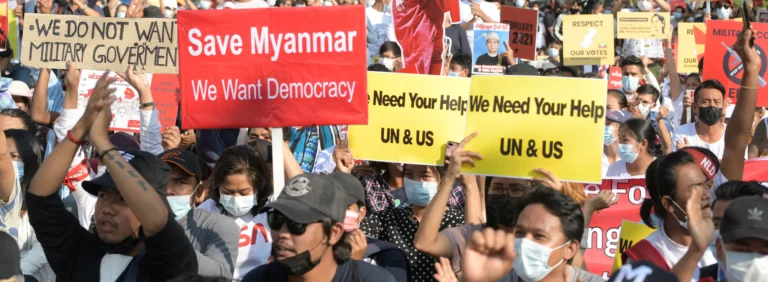Tech Activism: How Developers and Hackers Are Supporting the Pro-Democracy Movement
In the digital age, the frontline of democracy is no longer limited to city streets and public squares—it extends deep into the digital realm. Across the globe, coders, software engineers, ethical hackers, and online communities are rising as a new force in tech activism, using their technical skills to support pro-democracy movements in countries facing repression, surveillance, and authoritarianism.
From Myanmar to Belarus, Iran, and beyond, these digital freedom fighters are building tools, exposing corruption, protecting protesters, and disrupting state propaganda. Their work is often invisible—but it is proving vital to the survival and resilience of modern resistance movements.
1. Myanmar: A Case Study in Digital Resistance
Since the 2021 military coup in Myanmar, the country has witnessed a surge in grassroots tech activism. With conventional media under military control, the internet has become a battleground for truth, coordination, and defiance.
Key Contributions by Tech Activists:
VPN Development and Distribution: As the military blocked websites and slowed internet speeds, local developers shared free VPN tools and proxy settings to help citizens bypass censorship.
Secure Messaging and Coordination: Telegram, Signal, and custom-made apps were deployed to organize protests and share safety updates, with coders advising activists on encryption, metadata protection, and anonymity.
Hacktivism Against Junta Infrastructure: Groups like Myanmar Hackers launched cyberattacks on government websites, military propaganda pages, and financial platforms associated with the regime. These DDoS attacks were symbolic and disruptive, showing that even digital fortresses could be breached.
Public Data Leaks: Tech activists leaked documents exposing military-owned businesses and bank accounts, allowing civil society groups to organize boycotts and economic pressure campaigns.
2. Tools of Tech Activism
Tech activists use a wide range of tools and techniques, including:
Anonymizing and communication tools: Tor, Signal, Tails OS, and encrypted cloud storage.
OSINT (Open Source Intelligence): Tracking troop movements, identifying perpetrators of violence via leaked photos, and using satellite imagery to confirm military actions.
Digital forensics: Analyzing videos and metadata to authenticate war crimes or state abuses.
App development: Custom protest safety apps with offline messaging, crowd alerts, and emergency contact features.
3. Ethical Hacking and Doxxing of Repressive Regimes
In some cases, "white-hat" hackers and digital collectives go on the offensive by:
Crashing official government websites and pro-regime media
Publishing contact information of security officials involved in repression (doxxing)
Exposing internet surveillance systems or foreign companies supplying them
While controversial and sometimes legally grey, such actions aim to increase transparency and accountability where formal justice systems have failed.
4. Global Solidarity and Open-Source Resistance
Much of this work relies on open-source collaboration. Developers from around the world contribute code, security audits, and infrastructure support to help pro-democracy movements stay safe and connected.
Examples include:
GitHub repositories with protester safety guides, mesh networks, and censorship circumvention tools
Global infosec communities offering pro bono digital security training
Diaspora tech communities acting as safe hubs for coordination and advocacy
5. Risks and Limitations
Despite their crucial role, tech activists face serious risks:
State surveillance and cyber counterattacks from military-backed hackers
Legal persecution under digital security or terrorism laws
Misinformation campaigns aimed at discrediting their work
They also grapple with challenges such as lack of funding, burnout, and the ever-evolving nature of authoritarian technology.
6. The Future of Tech-Enabled Resistance
As authoritarian regimes become more sophisticated in their digital repression—using AI surveillance, facial recognition, and internet shutdowns—tech activists are evolving in parallel. The next phase may include:
Decentralized tools using blockchain and peer-to-peer architecture
AI-based content verification to combat deepfakes and propaganda
Secure protest platforms designed specifically for high-risk environments
In many countries, the struggle for democracy may increasingly depend not only on mass mobilization but on cyber literacy, digital resilience, and the quiet courage of those behind the keyboard.
Tech activism is reshaping the landscape of resistance. In a world where censorship, propaganda, and digital repression are on the rise, developers and hackers are becoming vital allies in the fight for freedom. Their work underscores a key truth: in the battle between control and liberation, code can be as powerful as protest.
Thank you for reading! Visit us anytime at Myanmar.com for more insights and updates about Myanmar

 THE ROLE OF SOCIAL MEDIA IN RESISTANCE MOVEMENTS
THE ROLE OF SOCIAL MEDIA IN RESISTANCE MOVEMENTS
 EARTHQUAKE PREPAREDNESS IN MYANMAR: LESSONS FROM 2025
EARTHQUAKE PREPAREDNESS IN MYANMAR: LESSONS FROM 2025
 Dr. Sasa Resigns from NUG, Restructuring Expected Inside Shadow Government
Dr. Sasa Resigns from NUG, Restructuring Expected Inside Shadow Government
 INNOVATION UNDERGROUND: TECH RESISTANCE IN MYANMAR
INNOVATION UNDERGROUND: TECH RESISTANCE IN MYANMAR
 𝗛𝗼𝘄 𝗠𝘆𝗮𝗻𝗺𝗮𝗿’𝘀 𝗖𝘆𝗯𝗲𝗿-𝗦𝗹𝗮𝘃𝗲𝗿𝘆 𝗡𝗲𝘁𝘄𝗼𝗿𝗸𝘀 𝗘𝘅𝗽𝗹𝗼𝗶𝘁 𝗬𝗼𝘂𝗻𝗴 𝗔𝗳𝗿𝗶𝗰𝗮𝗻𝘀 𝗔 𝗡𝗲𝘄 𝗣𝗵𝗮𝘀𝗲 𝗼𝗳 𝗮𝗻 𝗘𝘅𝗽𝗮𝗻𝗱𝗶𝗻𝗴 𝗖𝗿𝗶𝘀𝗶𝘀
𝗛𝗼𝘄 𝗠𝘆𝗮𝗻𝗺𝗮𝗿’𝘀 𝗖𝘆𝗯𝗲𝗿-𝗦𝗹𝗮𝘃𝗲𝗿𝘆 𝗡𝗲𝘁𝘄𝗼𝗿𝗸𝘀 𝗘𝘅𝗽𝗹𝗼𝗶𝘁 𝗬𝗼𝘂𝗻𝗴 𝗔𝗳𝗿𝗶𝗰𝗮𝗻𝘀 𝗔 𝗡𝗲𝘄 𝗣𝗵𝗮𝘀𝗲 𝗼𝗳 𝗮𝗻 𝗘𝘅𝗽𝗮𝗻𝗱𝗶𝗻𝗴 𝗖𝗿𝗶𝘀𝗶𝘀
 THE ROHINGYA CRISIS: CURRENT STATUS AND INTERNATIONAL RESPONSE
THE ROHINGYA CRISIS: CURRENT STATUS AND INTERNATIONAL RESPONSE
